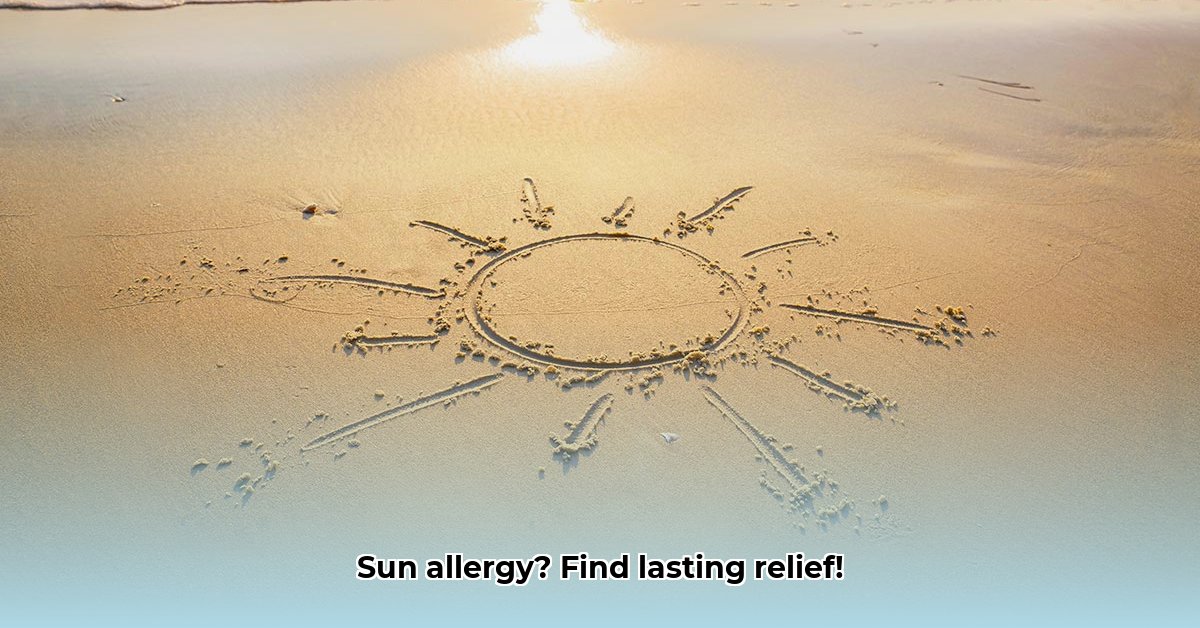
Dealing with zonneallergie (sun allergy) can be a real hassle – itchy rashes and blotchy skin after a sunny day? Not ideal! But don't let it spoil your enjoyment of the South African outdoors. This guide will help you understand your allergy, manage symptoms, and get back to enjoying the sunshine.
Understanding Zonneallergie (Polymorphous Light Eruption – PMLE)
Most zonneallergie cases are actually Polymorphous Light Eruption (PMLE). It's a common skin reaction where your immune system overreacts to the sun's ultraviolet (UV) rays, particularly UVA. This causes an irritating rash. While not dangerous, it's certainly uncomfortable.
Spotting the Signs: Is it Zonneallergie?
After sun exposure, have you noticed itchy, red bumps or blotches? These usually appear hours or even days later on sun-exposed skin. Blisters might also develop. If you suspect zonneallergie, see a doctor for a proper diagnosis. Don't self-diagnose!
What Triggers Zonneallergie?
The main trigger is UV radiation. Certain factors can worsen the reaction including some medications, cosmetics, and even plants. It's also more common in people with lighter skin.
Taming Your Zonneallergie: A Step-by-Step Plan
Managing zonneallergie requires a strategic approach. Here's a plan to help you take control:
Gentle Sun Exposure: Start with short periods in the sun, gradually increasing exposure as your skin adapts. Think of it as building sun tolerance.
Sunscreen is Key: Use a broad-spectrum sunscreen with SPF 30 or higher (or even higher for sensitive skin). Reapply frequently, especially after swimming or sweating.
Protective Clothing: Wear hats, long sleeves, and sunglasses to shield your skin. Even light clothing offers protection.
Smart Sun Timing: Avoid peak sun hours (11 AM to 3 PM) when UV rays are strongest. Plan outdoor activities accordingly.
Medical Assistance: For severe symptoms, consult a doctor. They might prescribe antihistamines or topical corticosteroids. Never self-medicate!
Long-Term Strategies: Living Well with Zonneallergie
For recurring zonneallergie:
Regular Check-ups: Monitor your skin's sensitivity with regular doctor visits. Early intervention is crucial.
Light Therapy (PUVA): Your doctor might suggest controlled UV light exposure (PUVA). This can improve sun tolerance, but carries potential long-term risks – discuss this thoroughly with your doctor.
Identify Triggers: Keep a diary noting reactions, activities, and products used (cosmetics, medication etc.). This helps pinpoint and avoid triggers.
Treatment Options: Weighing the Pros and Cons
Treatment depends on your specific needs:
| Treatment Option | Pros | Cons |
|---|---|---|
| Topical Corticosteroids | Reduces inflammation and itching. | Potential side effects with long-term use. |
| Systemic Corticosteroids | Rapid relief from severe symptoms. | Significant potential side effects; usually short-term use. |
| Light Therapy (PUVA) | May improve long-term sun tolerance. | Risk of premature aging and potentially increased cancer risk. |
| High SPF Sunscreen | Prevents UV damage and reduces reaction severity. | Requires frequent reapplication. |
| Gradual Sun Exposure | Builds sun tolerance. | Requires patience and careful sun management. |
Having zonneallergie doesn't mean avoiding the sun entirely. With a tailored plan, you can still enjoy the outdoors. Your doctor is your best resource – don't hesitate to seek their advice. Remember, a little planning goes a long way in keeping those sunny days itch-free!